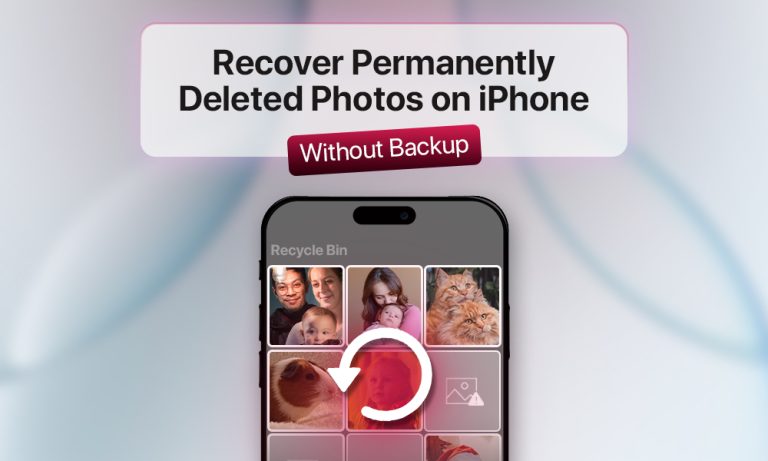The loss of essential iPhone photos becomes extremely distressing because the Recently Deleted folder fails to recover them. Sometimes, the recovery of your iPhone data through iCloud and iTunes backups becomes impossible. For example, when no backup exists or when the backup does not contain the photos you need to recover.
The deletion of files does not necessarily mean they are completely erased from existence. The right methods and tools enable photo recovery from situations where backup is not available. This guide provides step-by-step instructions along with effective solutions to help you retrieve your important iPhone memories.
What “Permanently Deleted” Really Means on iPhone
The photos don’t disappear from the iPhone when you delete them. They actually get moved into the Recently Deleted folder, where they hang around for about a month. During that time, you can just go in and restore it if you change your mind.
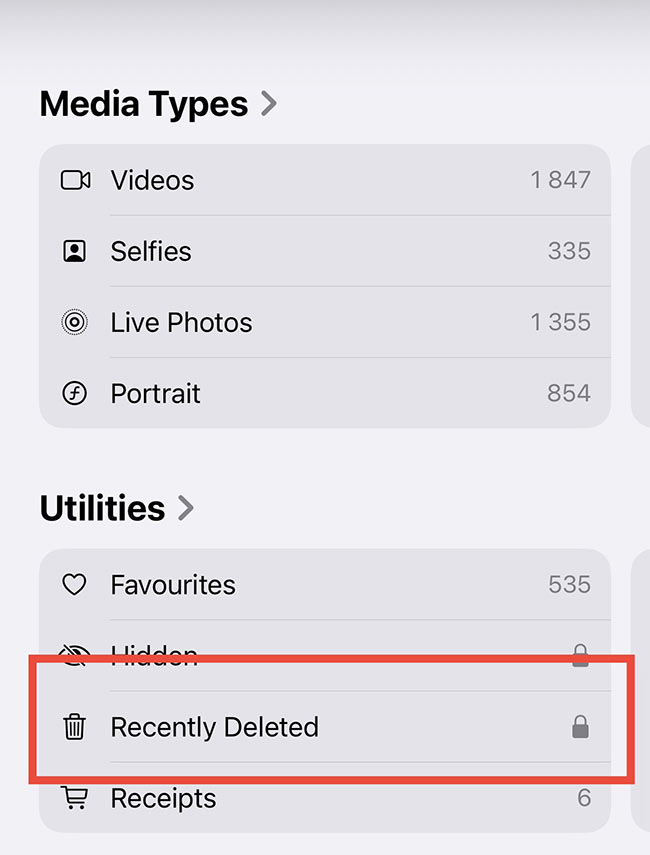
After those 30 days are up – or if you go in and clear it out yourself – the photo is marked as gone for good. But “permanent” on an iPhone doesn’t really mean it’s instantly wiped from the device. What happens is the phone frees up that space so it can be used for new stuff. Until something else takes its place, the old photo data can still hang around in the background.
That’s why recovery is sometimes still possible. If you use special tools or more advanced methods, you can scan the phone’s storage. And this way, try to pull back the files that haven’t been overwritten yet. The rule of thumb is – the quicker you try, the better your chances are.
Regular iPhone features won’t let you do this, but with the right tools, it’s often doable.
Check These Locations Before Trying iPhone Recovery Tools
Before you jump into using third-party recovery software, it’s worth double-checking a few places on your iPhone. Photos that disappear into oblivion tend to hide in unexpected locations. Here are the first spots you should check:
1. Recently Deleted Folder
Do the following:
- Open the Photos app.
- Go to Utilities.
- Scroll down to Recently Deleted.
Photos stay in this folder for 30 days after deletion. Your missing images should still be present, so you can recover them with a single tap.
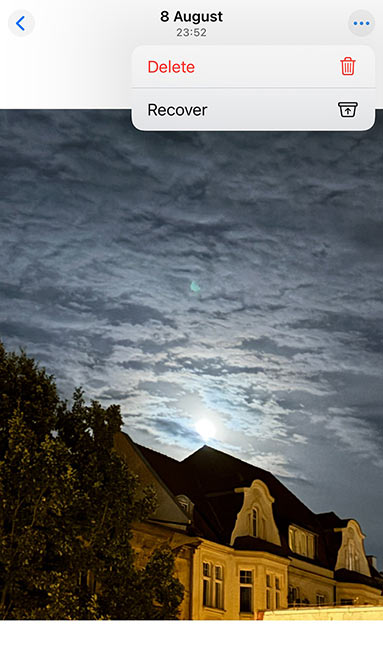
2. Hidden Album
Some photos remain intact even though they are not visible to the user. Check the Hidden album under Utilities in the Photos app. You might find what you thought was gone.

3. iCloud Photos
After enabling iCloud Photos, your photos will maintain their online backup status.
- Go to iCloud.com.
- Log in with your Apple ID.
- Check the Photos.
Sometimes deleted photos are backed up there even if you can’t find them on your device.
4. Shared Albums
The pictures you shared through a Shared Album continue to exist in the shared folder even after you delete them from your main library.
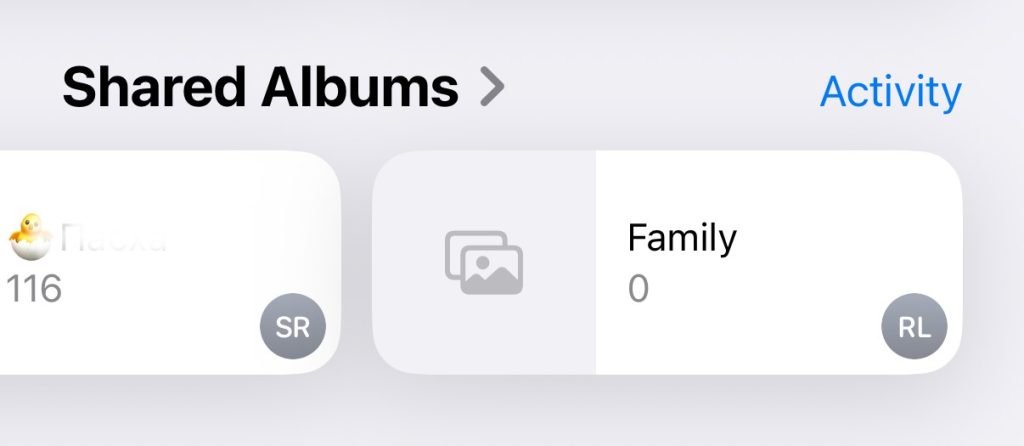
5. Other Apps
Check messengers and social media platforms. Photos are automatically saved or shared there, which gives you another chance to get them back.
You can recover your photos by checking these places first without needing any special tools. If they’re not there, then it’s time to move on to recovery methods.
Recovering Photos with Professional Data Recovery Software
When you can’t find your photos in the Recently Deleted album or iCloud, the best option is to try software for data recovery. These tools are used to scan the iPhone’s internal storage for fragments of deleted files that the system no longer displays.
The majority of recovery programs require users to connect their iPhone to either a Mac or Windows computer to perform deep scanning operations. The most popular recovery tools include:
- Stellar Data Recovery for iPhone
- Dr.Fone
- iMobie PhoneRescue
- Tenorshare UltData
The success of these apps depends on the amount of new data stored on your phone after deletion, but they usually recover photos that appeared lost forever.
Keep in mind: recovery software usually isn’t free. The preview function of many tools allows users to see recoverable files before they need to purchase a paid version to recover the files. Still, if the photos are truly valuable, it’s worth considering.
When to Reach Out to Apple or a Data Recovery Service
The situation requires professional assistance when recovery software fails to restore your photos.
- Apple Support. Contact Apple for assistance when you suspect iCloud account issues or require backup history verification, even though the company does not guarantee data retrieval from deleted files.
- Specialized data recovery services. The recovery labs specialize in helping clients retrieve their irreplaceable data, including family pictures and important work files. Specialists use expert tools to get lost data from the iPhone storage chip. The cost of these services can be high, so consider them after trying all other options.
How to Prevent Permanent Photo Loss in the Future
The loss of photos leads to stress, but you can prevent this situation by implementing basic safety measures:
- Store your photos in iCloud. Settings > Apple Account > iCloud.
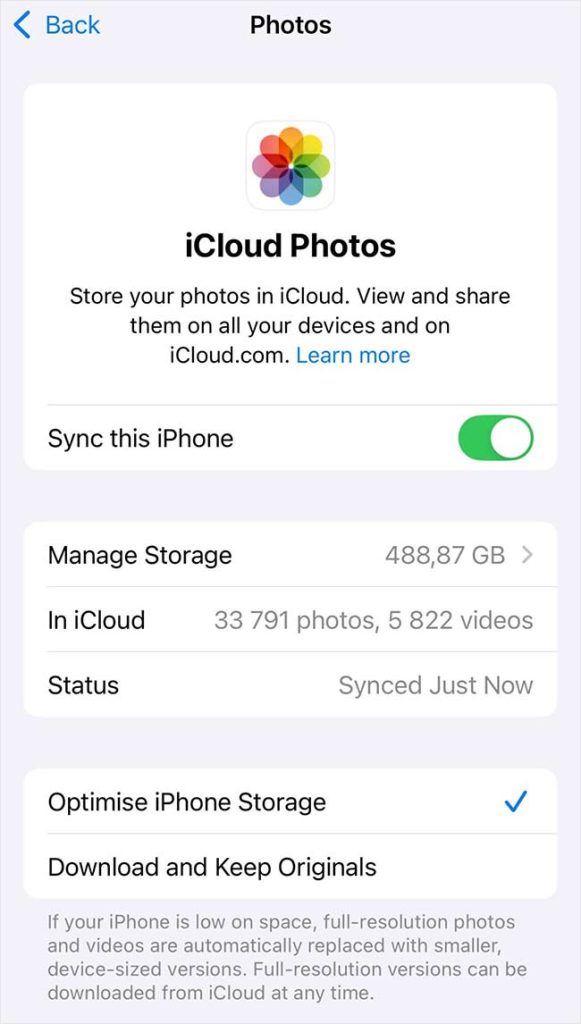
- Use iTunes or Finder backups.
- Consider getting third-party cloud services like Google Photos and Dropbox.
- Check your Recently Deleted and Hidden folders regularly. So you can avoid losing images deleted by mistake.
- Don’t save new large files right after losing photos. This reduces the chance of overwriting deleted data.
- Use an external drive to store your photos.
Most people fail to consider backup strategies until they experience a critical loss. The process of creating an additional photocopy requires only a few minutes but it protects your valuable memories for years to come. The simple act of storing a few cherished albums on external drives or cloud services creates a substantial impact. The development of a small daily routine today will protect you from the distress of losing something irreplaceable tomorrow.
Conclusion:
The term “permanently deleted” does not mean that your iPhone photos are completely destroyed, even though some data loss occurs. Check the Recently Deleted folder, iCloud, and Shared Albums first. If needed, use professional recovery tools, and you will still have a good chance of getting them back.


